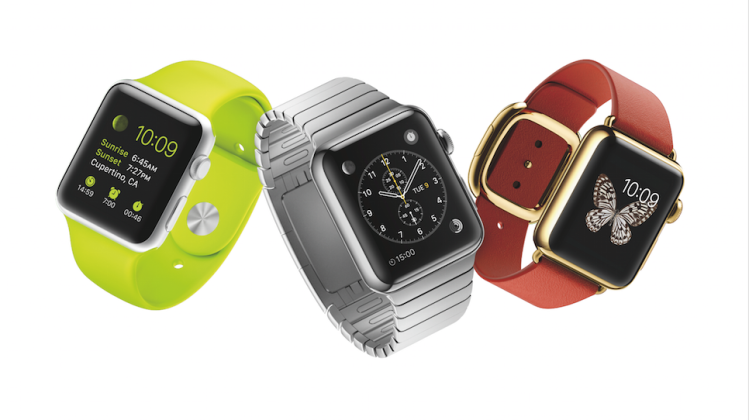Judging by the preorder estimates for the Apple Watch, most consumers appear to have hedged their bets on this first version of the new device. Most people who preordered a Watch went for the lowest price models, the aluminum Sport watches.
And most of those who bought more expensive stainless steel watches seem to have aimed to limit their investment by buying a lower-priced band.
Slice Intelligence is the first out with research on which Apple Watches sold best, estimating that at least 62 percent of the estimated 957,000 or so people in the U.S. who preordered an Apple Watch on Friday ordered one of the bottom-of-the-line aluminum Sport watches. Slice found that 38 percent bought stainless steel watches.
The firm told VentureBeat that it had found no (zero) preorders for the 18-karat gold Edition Watch.
These numbers roughly jibe with estimates issued by BMO Capital last week saying that 60 percent of those interested in an Apple Watch would opt for the aluminum version, while just 12 planned to go for the stainless steel model, just 4 percent planned buy the gold version, with 24 percent of people undecided.
Slice said that consumers who ordered an Apple Watch Sport spent an average of $382.83 per watch, while those who ordered a stainless steel Watch spent $707.04.
Slice makes e-commerce organization apps for consumers, and also licenses its software to retailers. As such it’s able to access the e-receipts in the inboxes of a wide swatch of consumers, the company told VentureBeat.
The Watch was relatively well received in the first media reviews that appeared last week. Many noted that the Watch seemed useful, but that the app experience needed refinement. Several analysts told VentureBeat that consumers would be wise to save their money for more mature future versions of the Watch.
The Watch is still very tied to the paired smartphone in most apps. The first version of the Watch contains no GPS radio, and no cellular or Wi-Fi radios for Internet access and voice calls. The battery does not last more than a day. Many of the components in the Watch — notably the near-field communications (NFC) radio — are not accessible by third-party app developers.
While some of those limitations can be addressed in future software updates, some of them — including improvements to the battery — can only come via a physical upgrade to the hardware itself.
I’m sure that’s why many consumers thought twice and three times before they dropped more than $500 on an Apple Watch. Judging by the probable lifespan of version 1.0 of the device, it’s just not a very good long-term investment.
But it’s a fascinating device, and lots of folks want to find out if it might be a truly useful device for them.
And it’s just a hell of a lot of fun to hold the work of Jony Ive and company in one’s hand — to play with the results of all that thought, the beautiful design, and the sheer vision of the thing.
That’s why I preordered one. But my bill was only $382.
VentureBeat's mission is to be a digital town square for technical decision-makers to gain knowledge about transformative enterprise technology and transact. Learn More

